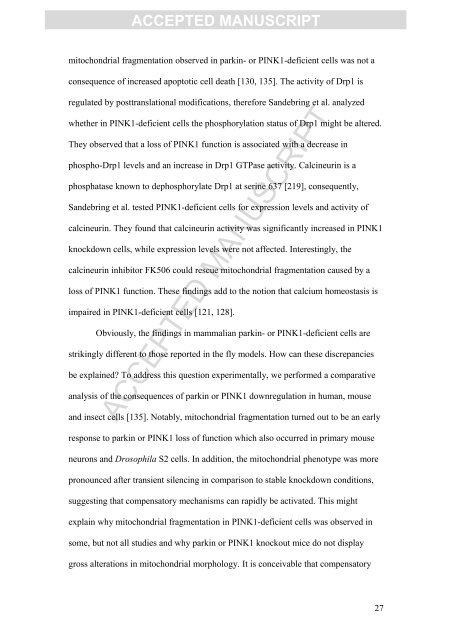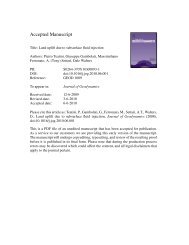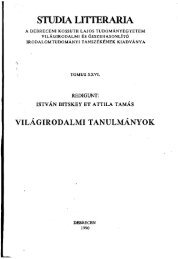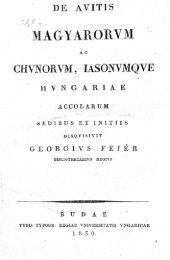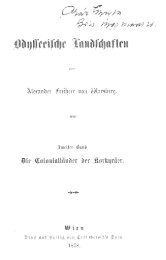accepted manuscript
accepted manuscript
accepted manuscript
You also want an ePaper? Increase the reach of your titles
YUMPU automatically turns print PDFs into web optimized ePapers that Google loves.
ACCEPTED MANUSCRIPT<br />
mitochondrial fragmentation observed in parkin- or PINK1-deficient cells was not a<br />
consequence of increased apoptotic cell death [130, 135]. The activity of Drp1 is<br />
regulated by posttranslational modifications, therefore Sandebring et al. analyzed<br />
whether in PINK1-deficient cells the phosphorylation status of Drp1 might be altered.<br />
They observed that a loss of PINK1 function is associated with a decrease in<br />
phospho-Drp1 levels and an increase in Drp1 GTPase activity. Calcineurin is a<br />
phosphatase known to dephosphorylate Drp1 at serine 637 [219], consequently,<br />
Sandebring et al. tested PINK1-deficient cells for expression levels and activity of<br />
calcineurin. They found that calcineurin activity was significantly increased in PINK1<br />
knockdown cells, while expression levels were not affected. Interestingly, the<br />
calcineurin inhibitor FK506 could rescue mitochondrial fragmentation caused by a<br />
loss of PINK1 function. These findings add to the notion that calcium homeostasis is<br />
impaired in PINK1-deficient cells [121, 128].<br />
Obviously, the findings in mammalian parkin- or PINK1-deficient cells are<br />
strikingly different to those reported in the fly models. How can these discrepancies<br />
be explained? To address this question experimentally, we performed a comparative<br />
analysis of the consequences of parkin or PINK1 downregulation in human, mouse<br />
ACCEPTED MANUSCRIPT<br />
and insect cells [135]. Notably, mitochondrial fragmentation turned out to be an early<br />
response to parkin or PINK1 loss of function which also occurred in primary mouse<br />
neurons and Drosophila S2 cells. In addition, the mitochondrial phenotype was more<br />
pronounced after transient silencing in comparison to stable knockdown conditions,<br />
suggesting that compensatory mechanisms can rapidly be activated. This might<br />
explain why mitochondrial fragmentation in PINK1-deficient cells was observed in<br />
some, but not all studies and why parkin or PINK1 knockout mice do not display<br />
gross alterations in mitochondrial morphology. It is conceivable that compensatory<br />
27


